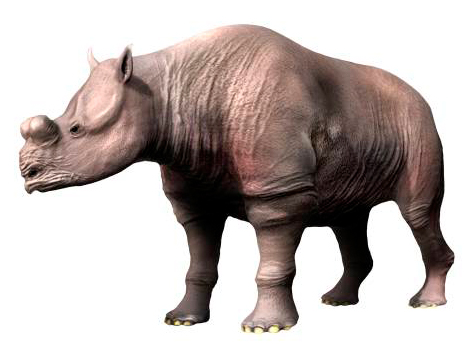|
Protitanops
''Protitanops curryi'' is an extinct species of brontothere that lived during the Eocene, in the Western United States, especially in Death Valley, California, where the best specimens of the species ''P. curryi'' have been found. It bore a strong resemblance to ''Megacerops'' brontothere Brontotheriidae is a family of extinct mammals belonging to the order Perissodactyla, the order that includes horses, rhinoceroses, and tapirs. Superficially, they looked rather like rhinos, although they were actually more closely related to h ...s with its knob-shaped horns. However, the position of the horns differed in ''Protitanops'', in that they pointed straight up, rather than more forwards, like in ''Megacerops''. References Brontotheres {{paleo-oddtoedungulate-stub ... [...More Info...] [...Related Items...] OR: [Wikipedia] [Google] [Baidu] |
Brontothere
Brontotheriidae is a family of extinct mammals belonging to the order Perissodactyla, the order that includes horses, rhinoceroses, and tapirs. Superficially, they looked rather like rhinos, although they were actually more closely related to horses; Equidae and Brontotheriidae make up the suborder Hippomorpha. They lived around 56–34 million years ago, until the very close of the Eocene. Characteristics and evolution Brontotheres retain four toes on their front feet and three toes on their hind feet. Their teeth are adapted to shearing (cutting) relatively nonabrasive vegetation. Their molars have a characteristic W-shaped ectoloph (outer shearing blade). The evolutionary history of this group is well known due to an excellent fossil record in North America. The earliest brontotheres, such as ''Eotitanops'', were rather small, no more than a meter in height, and hornless. Brontotheres evolved massive bodies, although some small species such as '' Nanotitanops'' did p ... [...More Info...] [...Related Items...] OR: [Wikipedia] [Google] [Baidu] |
Eocene
The Eocene ( ) Epoch is a geological epoch that lasted from about 56 to 33.9 million years ago (mya). It is the second epoch of the Paleogene Period in the modern Cenozoic Era. The name ''Eocene'' comes from the Ancient Greek (''ēṓs'', " dawn") and (''kainós'', "new") and refers to the "dawn" of modern ('new') fauna that appeared during the epoch. The Eocene spans the time from the end of the Paleocene Epoch to the beginning of the Oligocene Epoch. The start of the Eocene is marked by a brief period in which the concentration of the carbon isotope 13C in the atmosphere was exceptionally low in comparison with the more common isotope 12C. The end is set at a major extinction event called the ''Grande Coupure'' (the "Great Break" in continuity) or the Eocene–Oligocene extinction event, which may be related to the impact of one or more large bolides in Siberia and in what is now Chesapeake Bay. As with other geologic periods, the strata that define the start and e ... [...More Info...] [...Related Items...] OR: [Wikipedia] [Google] [Baidu] |
Death Valley
Death Valley is a desert valley in Eastern California, in the northern Mojave Desert, bordering the Great Basin Desert. During summer, it is the hottest place on Earth. Death Valley's Badwater Basin is the point of lowest elevation in North America, at below sea level. It is east-southeast of Mount Whitney — the highest point in the contiguous United States, with an elevation of 14,505 feet (4,421 m). On the afternoon of July10, 1913, the United States Weather Bureau recorded a high temperature of 134 °F (56.7 °C) at Furnace Creek in Death Valley, which stands as the highest ambient air temperature ever recorded on the surface of the Earth. This reading, however, and several others taken in that period are disputed by some modern experts. Lying mostly in Inyo County, California, near the border of California and Nevada, in the Great Basin, east of the Sierra Nevada mountains, Death Valley constitutes much of Death Valley National Park and is the principal fea ... [...More Info...] [...Related Items...] OR: [Wikipedia] [Google] [Baidu] |
California
California is a state in the Western United States, located along the Pacific Coast. With nearly 39.2million residents across a total area of approximately , it is the most populous U.S. state and the 3rd largest by area. It is also the most populated subnational entity in North America and the 34th most populous in the world. The Greater Los Angeles area and the San Francisco Bay Area are the nation's second and fifth most populous urban regions respectively, with the former having more than 18.7million residents and the latter having over 9.6million. Sacramento is the state's capital, while Los Angeles is the most populous city in the state and the second most populous city in the country. San Francisco is the second most densely populated major city in the country. Los Angeles County is the country's most populous, while San Bernardino County is the largest county by area in the country. California borders Oregon to the north, Nevada and Arizona to the ea ... [...More Info...] [...Related Items...] OR: [Wikipedia] [Google] [Baidu] |
Megacerops
''Megacerops'' ("large-horned face", from '' méga-'' "large" + '' kéras'' "horn" + '' ōps'' "face") is an extinct genus of the prehistoric odd-toed ungulate (hoofed mammal) family Brontotheriidae, an extinct group of rhinoceros-like browsers related to horses. It was endemic to North America during the Late Eocene epoch (38–33.9 mya), existing for approximately . Description All of the species had a pair of blunt horns on their snout (the size varying between species), with the horns of males being much larger than those of the females. This could indicate that they were social animals which butted heads for breeding privileges. Despite resembling the rhinoceros, it was larger than any living rhinoceros: the living animal easily approached the size of the African forest elephant, the third-largest land animal today. It stood about tall at the shoulders with an overall length(including tail) of . Its skull reached in greatest length, with some specimens possessing su ... [...More Info...] [...Related Items...] OR: [Wikipedia] [Google] [Baidu] |



